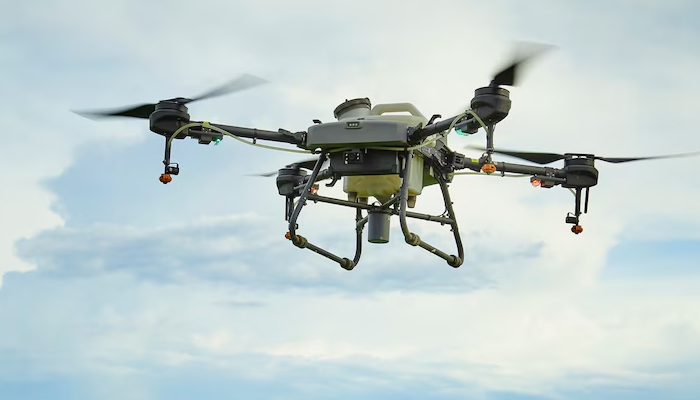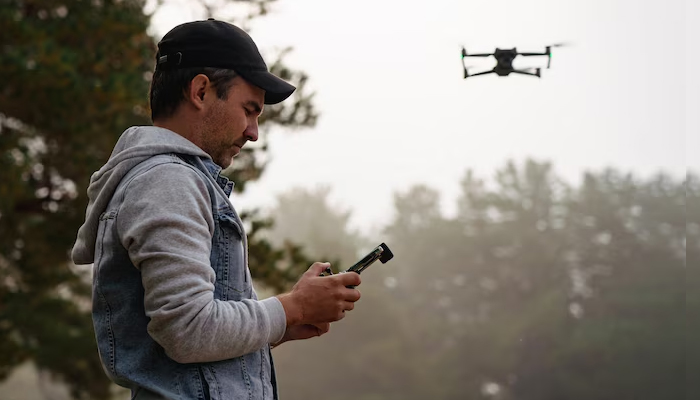If you’re thinking of buying a drone for your use or renting one, you should first learn how fast can drones fly. Initially, it will be challenging to operate the drone. So, it is better if you spend some time learning how to fly a drone properly to prevent mistakes. Read this post to learn about how fast can drones fly and how to fly them in the first place:
Why Should You Care About How Fast Can Drones Fly?
A drone is a remotely controlled aerial tool. Now that most drones include cameras, you can take amazing pictures and videos. Drones may be familiar to you from the following
- Delivery services for movies
- weddings
- Farming
Seeing the world from above is something that drones provide, and traditional cameras cannot. Operating a drone can be an exciting new experience for those who enjoy photography or technology. You can enjoy it without being a technology expert, all you have to learn is about how fast can drones fly.
Choosing the Right Drone for Beginners
Start with a basic drone that is easy to use before you set out to learn about how fast can drones fly. Seek out drones with capabilities like
- GPS
- Return-to-home
- Auto-hover for beginners
A lightweight drone is ideal for practice because it requires fewer flying permits. Don’t be sucked into expensive specs or costs right away. Advanced models are available once you feel comfortable flying. Whether lightweight or heavyweight, make sure it is a high speed drone.
Learn the Parts of a Drone
Be familiar with the fundamentals before you launch the fastest drones. The propellers on drones enable them to move and lift. The propellers rotate due to the motors. If a camera is included, it records and captures images.
The battery will provide power, and the controller can control the drone. Additionally, some drones incorporate GPS and sensors for stability. Knowing these components will enable you to fly more smartly and resolve minor problems, just like when you understand the components of a car before you drive it. Flying feels considerably easier once you get the hang of it.
Preparing for Your First Flight
Always check a few things before you take off. Is the battery in your drone fully charged? The propellers are clean and tight. Is the weather still? Steer clear of wind, rain, and intense sunlight when flying. Select a space free of buildings and trees, such as a park or playground.
Verify that the GPS on your drone is secured and that it is connected to the controller. Checking for a few minutes helps prevent crashes and lost drones. Consider it a precautionary habit along with your learning about how fast can drones fly.
Mastering Basic Drone Controls
Two joysticks will be used to operate fast drones. The left stick allows you to turn and move up and down. You can move the drone right, left, forward, or backward if you have correct control.
Try hovering and turning slowly after that. Take your time with intricate movements. Most drones also have beginner flight settings that automatically steady and slow down.
Try these fundamentals a few times before attempting anything more complex. It is similar to riding a bicycle: balance first, then perform stunts.
Common Beginner Mistakes to Avoid

A common cause of crashes for beginner pilots is flying
- Too fast
- too far
- indoors
Start in a spacious area outside. Wind should not be ignored because strong winds might cause tiny drones to drift or crash. Don’t take off till your battery is at zero percent. If your drone’s signal or battery dies, it may crash or take off. Additionally, pay attention to the drone, not just the camera screen. Flying a speed drone is easy, but it takes time and attention.
Drone Speed and Flight Modes
As you get more accustomed to using your drone, you’ll want to experiment with its various flying features. The experiment drive will be higher when learning how fast drones fly. To help beginning users maintain control, most starter drones have default speed settings that are purposefully low. Nonetheless, a lot of devices let you alternate between various speed settings.
The typical labels for these are
- Slow
- Normal
- sport
To learn the basics, start with the slowest setting. Gradually increase the speed after you feel comfortable with
- Hovering
- Landings
- Takeoffs
More precise control and quicker reaction times are required at faster speeds, even though they are perfect for covering more ground or capturing dynamic video. Always test higher speed modes in a wide open space to avoid impediments and unexpected actions.
Drone Speed by Category
Consumer Drones:
Keep in mind that these are the drones that may be used for everyday photography and casual flight as you investigate how fast can drones fly.. They are made easy to use and fly steadily, with top speeds usually falling between 30 and 50 km/h (20 and 30 mph). For enthusiasts and creators, they are perfect since they put stability and camera performance ahead of raw speed.
Racing Drones:
Racing drones are made to be quick and perfect for thrill-seekers. But do you have any idea about how fast can drones fly? These drones may go at remarkable speeds of more than 160 km/h (100 mph) if professionals handle them. Their design prioritizes the following, which makes them an excellent option for competitive drone racing.
- quick control
- low weight
- aerodynamics
Commercial Drones:
Commercial drones have a lot of use in the following fields
- Agricultural
- Deliveries
- Inspections
- surveying.
Have you ever been excited about how fast can drones fly? Many can fly between 60 and 100 km/h. On the other hand, the exact speed varies greatly based on design and payload requirements. These drones’ performance, flight duration, and utility will all be balanced.
What Influences Drone Speed?
The fastest drone speed or slowest drone speed will be based on the following factors:
Design and Aerodynamics
There can be a significant impact from
- Proper frames
- Effective motor-propeller configurations
- Low drag
For instance, racing drones are small and effective machines designed only for speed and agility.
Power and Battery
More potent batteries can provide the energy required for fast flying. But quicker speeds often translate into shorter flight durations. Operators must find the correct balance for their demands, whether endurance or speed.
The Bottom Line
The above points let you learn about how fast are drones and how to operate them. Even though a drone excites you, you should never take it for granted. Ensure you avoid the typical mistakes above and follow the proper precautions to make the best out of drones. It is time to witness everything from above as if you were an eagle.

